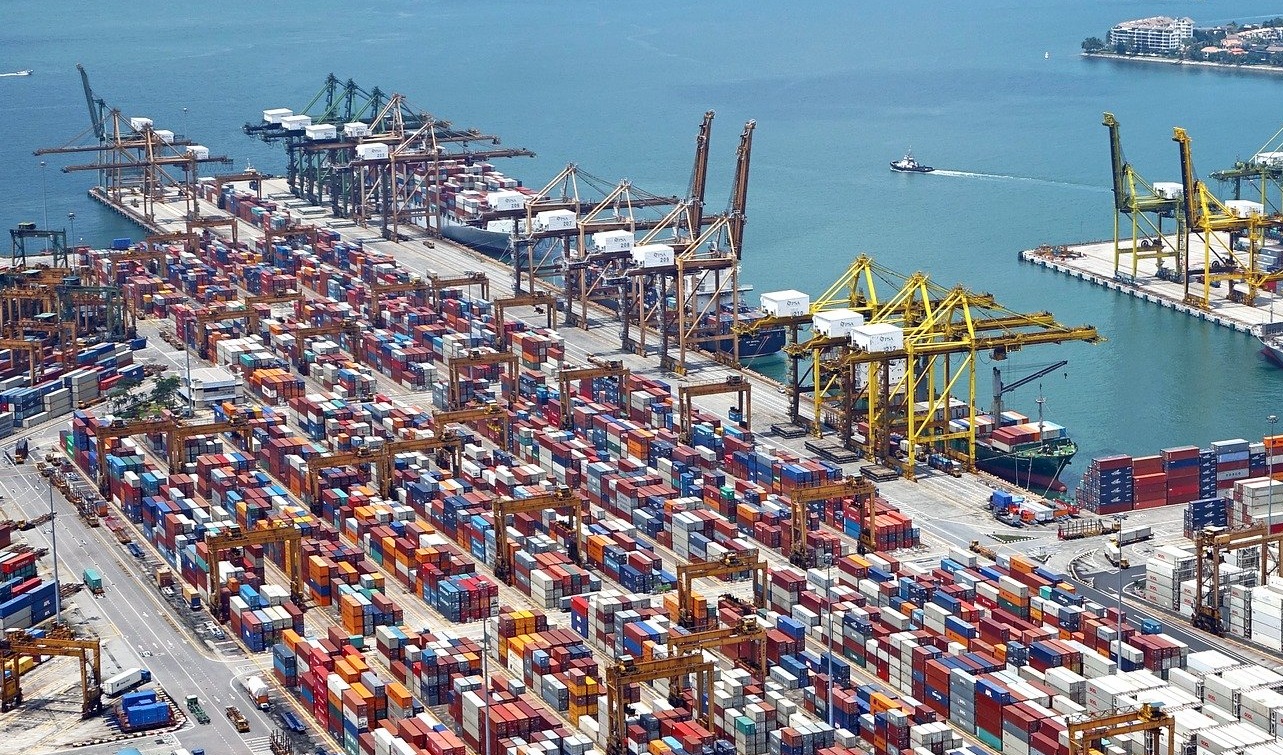
July Wholesale Prices Surge Most in Two Years as Businesses Pass Through Tariff Costs to Customers
Wholesale Prices Surge Most in Two Years as Businesses Pass Through Tariff Costs to Customers
WASHINGTON — The numbers that emerged Thursday morning from the Bureau of Labor Statistics carry implications that extend far beyond government spreadsheets and economic models—they represent a fundamental shift in how inflation moves through the American economy.
Producer prices surged 0.9% in July, marking the steepest monthly climb since June 2022 and propelling annual wholesale inflation to 3.3% from 2.3%. The acceleration obliterated economist expectations of a modest 0.2% increase, sending immediate shockwaves through financial markets already grappling with conflicting signals about the economy's direction.
Did you know that in July 2025, the U.S. Producer Price Index (PPI) surged by 0.9% in a single month—its largest jump since March 2022—far outpacing economists’ expectations of just a 0.2% rise? This unexpected spike, driven by sharp increases in service costs (+1.1%) and goods prices (+0.7%), pushed the annual PPI inflation rate to 3.3%, its highest since February. The sudden acceleration, following months of modest or flat changes, signals mounting inflation pressures that could soon filter into consumer prices.
This wholesale inflation surge signals more than statistical noise. It represents the moment when policy-driven cost pressures, long absorbed within corporate margins and supply chain buffers, finally break through to the surface of economic reality.

Anatomy of an Inflation Surge
The July data reveals the mechanical precision with which cost pressures cascade through American industry. Trade services—the margins that wholesalers and distributors command as goods traverse supply chains—jumped 2.0% in a single month, the sharpest increase in nearly two years.
This surge reflects a fundamental shift in business strategy across sectors. Companies that spent months absorbing higher input costs through compressed margins have reached a breaking point, simultaneously pushing price increases through to customers.
The Producer Price Index (PPI) measures price changes from the perspective of the domestic producer or seller, while the Consumer Price Index (CPI) measures price changes from the perspective of the consumer or buyer. Because it tracks costs earlier in the supply chain, the PPI is often considered a leading indicator of future changes in the CPI, as producers may pass on increased costs to consumers.
Core producer prices, excluding volatile food and energy sectors, climbed 0.6% monthly and reached 2.8% annually, underscoring that this inflationary pulse extends well beyond traditional commodity swings. The breadth indicates systematic repricing across American industry rather than isolated sectoral pressures.
The data validates what economists have long predicted: tariff-driven cost increases eventually surface in measurable price acceleration. Manufacturing sectors report persistent pressure from components sourced internationally, where domestic alternatives remain limited or prohibitively expensive for specialized inputs.
The Tariff Reckoning
Behind the statistical surge lies a more fundamental story about the delayed consequences of trade policy. The escalating tariff environment has created a complex web of cost pressures that businesses initially absorbed through margin compression and operational efficiency. That capacity appears exhausted.

Supply chain analysts describe a "breaking point" dynamic where companies simultaneously confront higher input costs, elevated shipping expenses, and reduced pricing flexibility. The result manifests as the broad-based inflation acceleration evident in July's data.
"What we're seeing is the delayed but inevitable impact of sustained cost pressures that businesses can no longer absorb internally," observed one senior economist at a major investment institution. "The tariff effects are finally flowing through to pricing decisions across multiple sectors."
The breadth of price increases suggests this represents more than temporary adjustment. Core goods prices rose 0.7% monthly while services advanced even more aggressively, indicating that inflation pressures extend well beyond traditional commodity swings or energy volatility.
Market Psychology Shifts
Financial markets absorbed Thursday's data with barely concealed alarm. The Dow Jones Industrial Average dropped 175 points at the opening bell, while the broader S&P 500 fell 0.35%. More significantly, bond markets began rapidly repricing Federal Reserve policy expectations, with traders reducing bets on aggressive monetary easing.
The psychological impact extends beyond immediate price movements. Investment professionals describe a fundamental recalibration of assumptions about inflation trajectory and monetary policy that had appeared settled just days earlier.
"The disconnect between relatively benign consumer price data earlier this week and this wholesale surge creates a dangerous information asymmetry," noted one portfolio manager at a major institutional investment firm. "Markets are struggling to reconcile conflicting signals about inflation momentum."
Two-year Treasury yields advanced as investors grappled with implications for Fed policy. The central bank now confronts a substantially more complex environment: supporting a slowing economy while managing inflation expectations that appeared well-anchored through early summer.
The Federal Reserve's Dilemma
For monetary policymakers, July's producer price surge represents a profound challenge to carefully constructed narratives about declining inflation and potential rate cuts. Fed officials had signaled openness to lowering borrowing costs as early as September, responding to labor market softening and broader economic deceleration.
This wholesale inflation acceleration complicates that calculus dramatically. While consumer prices remain relatively contained—thanks largely to falling gasoline costs—upstream pressures typically filter through to retail prices within three to six months.
The challenge for Fed officials lies in distinguishing between temporary price shocks and systematic inflation acceleration. Tariff-driven inflation presents particular difficulties for monetary policy, reflecting supply-side constraints that interest rate adjustments cannot directly address.
Market participants now assign roughly even odds to a September rate reduction, down from near-certainty following Tuesday's consumer price report. The shift reflects growing recognition that the Fed may prioritize inflation credibility over immediate growth accommodation.
Investment Strategy in Transition
The producer price surge demands fundamental reassessment of investment positioning across asset classes. Portfolio managers describe a marked shift toward companies with demonstrated pricing power—those capable of passing cost increases to customers without significant demand destruction.
Consumer staples companies with strong brand recognition emerge as relative beneficiaries in this environment. Enterprise software providers with subscription models offer similar defensive characteristics, as do specialized industrial firms operating in sectors with limited competition.
Conversely, businesses dependent on imported inputs or serving price-sensitive consumer segments face margin compression. Import-intensive small-cap companies carry elevated risk, as their limited scale restricts bargaining power with both suppliers and customers.
Fixed-income positioning requires particular sophistication in this environment. Treasury inflation-protected securities may offer attractive risk-adjusted returns as breakeven inflation rates adjust to reflect supply-side pressures. However, duration risk remains elevated as long-term yields could rise if inflation expectations become unanchored.
Currency markets reflect these dynamics through dollar strength against developed market peers, driven by yield differentials and relative monetary policy positioning. Emerging market currencies face compounded pressures from dollar appreciation and domestic inflation challenges.
Navigating Economic Uncertainty
Economic forecasters increasingly frame current inflation pressures as transitional rather than signaling a return to the persistent price acceleration of 2021-2022. The distinction carries enormous implications for both policy and investment decisions.
Supply chain adaptations continue gradually, with businesses developing alternative sourcing arrangements and inventory strategies that may ultimately dampen price volatility. However, these adjustments require time and capital investment that many smaller firms cannot easily accommodate.
The political dimension adds layers of complexity to economic analysis. Trade policy remains a key variable in inflation dynamics, with potential for both escalation and de-escalation depending on electoral outcomes and shifting geopolitical relationships.
Regional variations in price pressures suggest inflation will remain geographically uneven. The industrial Midwest faces different dynamics than coastal service economies, creating opportunities for investment strategies that capitalize on these divergences.
Preparing for Multiple Scenarios
Prudent investment positioning emphasizes flexibility over rigid allocation in this environment. Successful navigation requires maintaining exposure to real assets through commodity-linked securities and real estate investment trusts while avoiding overconcentration in long-duration fixed income.
Equity sector allocation increasingly favors businesses with pricing power over volume-dependent operations. Energy services, specialized manufacturing, and technology companies with strong competitive advantages offer potential protection against margin compression.
The current environment rewards active management and tactical allocation adjustments as economic data evolves. Static investment approaches may prove insufficient for navigating the volatility inherent in periods of economic transition.
For individual investors and institutions alike, the July producer price surge serves as a reminder that inflation remains a dynamic force requiring constant reassessment of assumptions and positioning. The challenge lies not in predicting precise outcomes but in maintaining adaptability as economic conditions evolve.
Investment analysis reflects current market conditions and established economic indicators. Past performance does not guarantee future results. Readers should consult qualified financial advisors for personalized guidance.